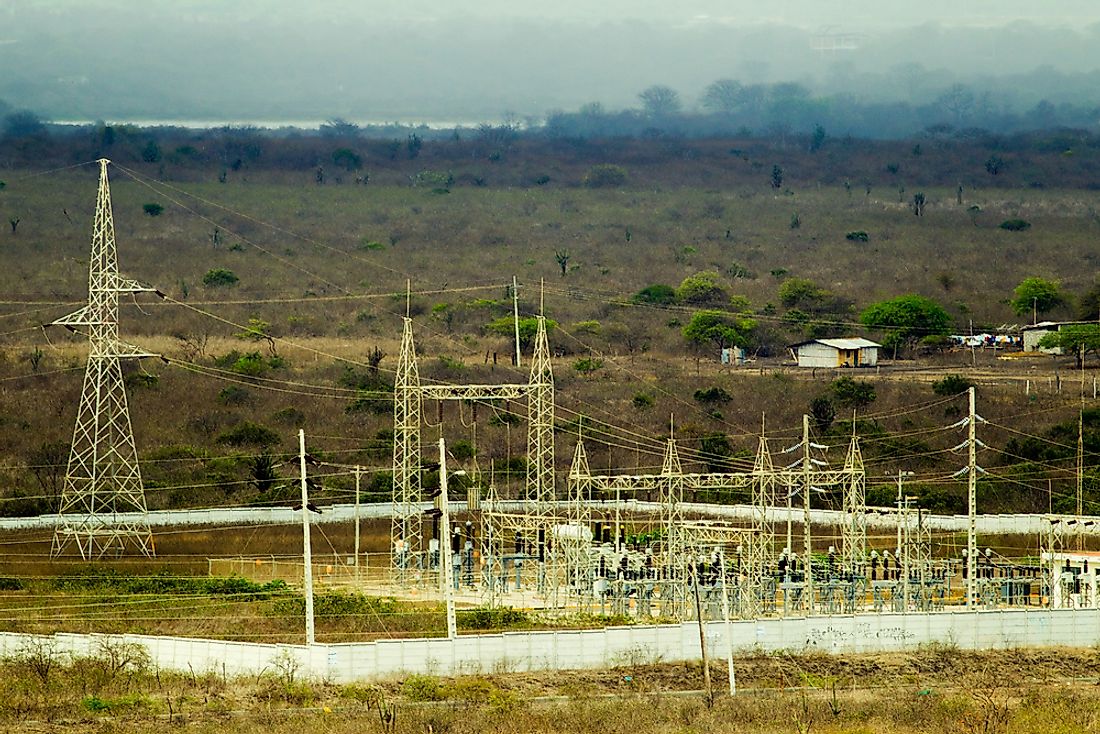The Biggest Industries In Ecuador

The Biggest Industries In Ecuador
The Republic of Ecuador is located in South America. It was colonized by the Spanish in the 16th century before achieving independence as one of the states of the Gran Colombia in 1820. Ecuador later attained sovereignty in 1830 after the Gran Colombia collapsed. It has a population of 16.8 million spread over an area of 109,484 sqm. Ecuador's national language is Spanish, but several Amerindian languages are also used. The Country is a middle-income developing economy that is dependent on agriculture and petroleum. In the last one and a half decade, Ecuador’s economy boomed from $18.3 billion in 2000 to $101 billion in 2014 before dropping to $98.6 billion in 2016.
For a long time, the economy depended largely on primary industries such as agriculture, petroleum, forestry, and aquaculture. However, shifts in global market trends and development of technology have led to the development of other sectors such as textile, processed food, metallurgy and the service sectors. The service sector contributes 56.14% of the GDP, Industry 33.43% and manufacturing 16.33%. The industry sector is concentrated in urban centers, about 70% of the manufacturing and non-oil sectors are concentrated in Quito and Guayaquil. Before 1990 much of Ecuador’s oil was produced for export while the non-oil sectors focused on the domestic market.
Key sectors such as automotive assembly relied on imports from the West and the East. However, the past decade has witnessed an effort by the central government to develop and encourage investments in the non-oil sectors with the aim of exporting more value-added goods. The decade has seen the rise of the non-oil exports to 25% of the state’s exports while petroleum products consist of the remaining exports. However, the dependence on oil has left the country vulnerable to fluctuation in oil prices which ripples to other sectors causing an unstable economy.
The Oil
Oil accounts for approximately fifty percent of exported goods and a third of the country’s tax revenue. About 500,000 barrels of oil is produced each day of which 90% is exported. Despite the huge amount of oil produced Ecuador is considered a medium oil producer and is ranked #31 in oil production and #20 in oil reserves globally. It is estimated that the country has about 6.5billion barrels of crude oil reserve. The main oil exports from the country are the heavy crude (Napo) and medium-heavy crude (Oriento). The oil produced in Ecuador is of better grade that Venezuela but the cost of shipping it to the Pacific coast through the Andes increasing the cost of exporting it. In the recent past, Ecuador initiated the plan to recover an estimated 900 million barrels from the Ishpingo-Tapococha-Tiputini. The plan would see the country flatten a large area of the Amazon.
Processed Foods
The processed food industry is the largest non-oil industry in Ecuador. The industry accounts for about 55% of the non-oil industry and generates an estimated $1.8 billion annually. The industry accounts for 8% of the GDP. Twenty-one percent of the industry consists of shrimp processing; meat account for 18% while fish account for 16%. The industry also consists of other minor services such as beverage processing and packaging, sugar processing, and sugar and cereal industries. Shrimp, tuna, and sugar are mostly exported while the other products are produced for the domestic market.
Textiles
The textile industry contributes about 15% of the non-oil industries. It is the second largest employer in the country after food processing. According to the government, the textile sector accounts for 50,000 direct jobs and about 300,000 indirectly. It is one of the oldest industries in the country. The textile industry was until the 1990s regarded as a localized industry that focused on the domestic market. The economy became dollarized in 2000, and consequentially the industry experienced a sudden boom that is yet to subside to date. Since 2007, the textile export has been increasing at a rate of 30.5% annually. The success of the industry in Ecuador is attributed to the ability of the sector internally produce fabric and yarn unlike several countries in Central America. Despite the development of the industry in the past two decades, SMEs remain the largest players. The lack of scale makes the industry competitive, but more can be achieved if bigger players were introduced into the sector.
Automotive
In the past decade, several automotive companies have increased their investments in Ecuador to meet the domestic demand and the build a stronger regional market. Between 2010 and 2015 the production grew by 37% while the domestic market grew by 45%. However, a large percentage of Ecuadorians still import vehicles. Ómnibus BB remains the country’s largest assembly producing trucks and SUVs. The company assembles the Chevrolet brand which makes up 40% of all vehicles sold in the country.
Fast-Moving Consumer Goods (FMCG)
For a long time, Ecuador depended on imported consumer goods but the new millennium saw the country invest more in the FMCG industry. Several multinationals set up companies in the country including Unilever which sells 75% of the goods it manufactures in the domestic market. Although the cost of production in the country in on a steady rise due to the rise in the cost of labor, the price elasticity in the market and the size of the market keeps the companies profitable.
Metallurgy
The metal industry accounts for a small factor in Ecuador’s economy although it remains as one of the country’s untapped resources. The industry exhibits high potential due to the growth in the other industries especially the automotive industry. Seventy-five percent of those working in the metallurgy industry are in micro-enterprises.







